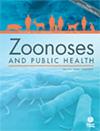Many fish species can harbour a wide range of pathogenic agents in their tissues. Of many pathogens, the parasitic nematode of genus Contracaecum, which resides in the tissues of fish species, can results in fish-borne infections in humans. This study was planned to assess consumers' awareness of fish-borne zoonoses in the fishing sites of Lake Chamo, Arba Minch, Ethiopia. The study was also aimed at demonstrating the zoonotic nematode, Contracaecum parasites in the Oreochromis niloticus and Lates niloticus fishes collected from Lake Chamo, Arba Minch, Ethiopia.
Assessment of awareness about fish-borne zoonoses was conducted in randomly selected participants (n = 162) using face-to-face interviews via a structured and semi-structured questionnaire. Besides, 70 fishes (O. niloticus = 35 and L. niloticus = 35) were examined for the presence of larva of Contracaecum and other anisakid genera through standard dissection, pepsin-hydrochloric acid digestion and microscopic observation. Consumers have inadequate awareness about fish-borne zoonoses based on the answers they provided to the questions. The majority of respondents (82%) consume raw fish in the area. Of these, a significantly higher proportion were male (p < 0.001), completed their elementary or high school (p = 0.004), Orthodox Christian (p = 0.044), fishermen (p < 0.001) and participants without previous information about fish-borne zoonoses (p < 0.001). Overall, of examined fishes (n = 70), n = 15 (21.4%, 95% CI, 12.8–33.2) were infected with Contracaecum larva. A significant (p = 0.028) higher infection prevalence was noted in L. niloticus (34.3%, 95% CI, 19.7–52.3) compared to O. niloticus (8.6%, 95% CI, 2.2–24.2). A unit gram addition in the total weight of fish would significantly raise the risk of Contracaecum infection by 1% (p < 0.001).
The presence of Contracaecum, a zoonotic nematode in the fishes, which are often preferred by consumers for raw dishes, designates a high risk of possible fish-borne infections in the area. Thus, providing education and training for fishermen, visitors of the area, and local people who visit the area for fish consumption, it is inevitably important to minimize the risk. Furthermore, health workers should suspect fish-borne infections, such as anisakidosis in patients who have a history of raw fish consumption in Arba Minch, Ethiopia.


